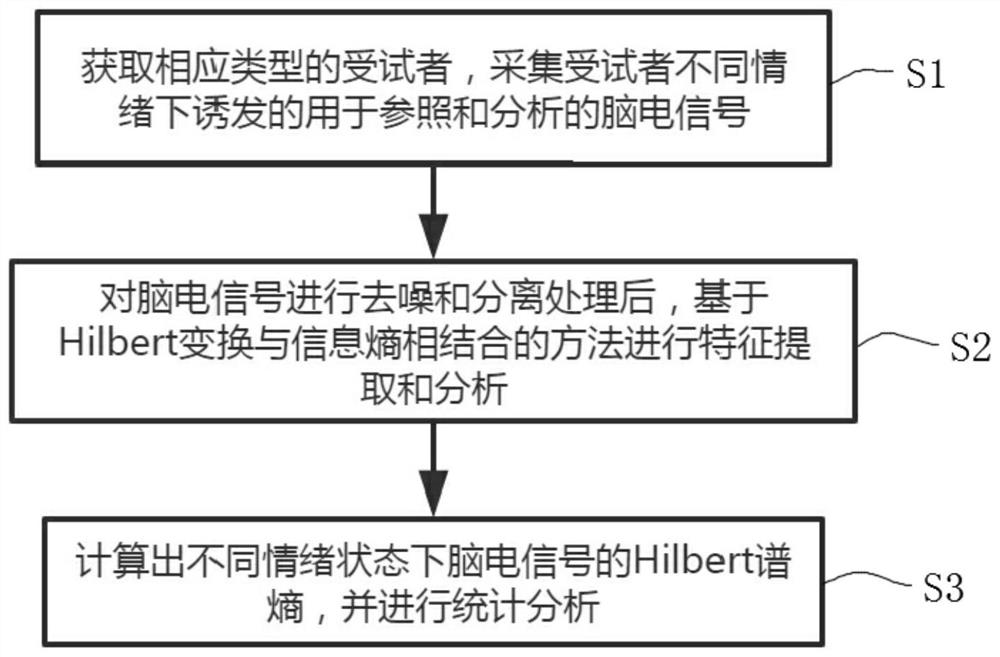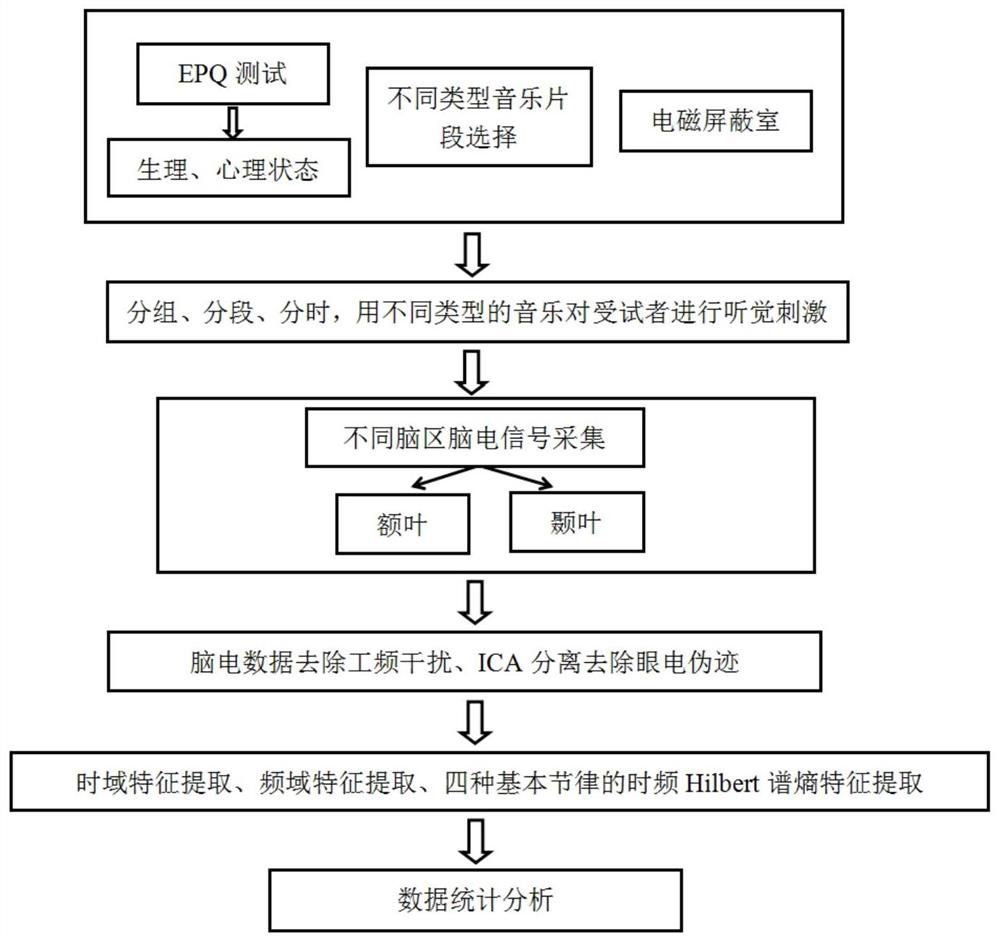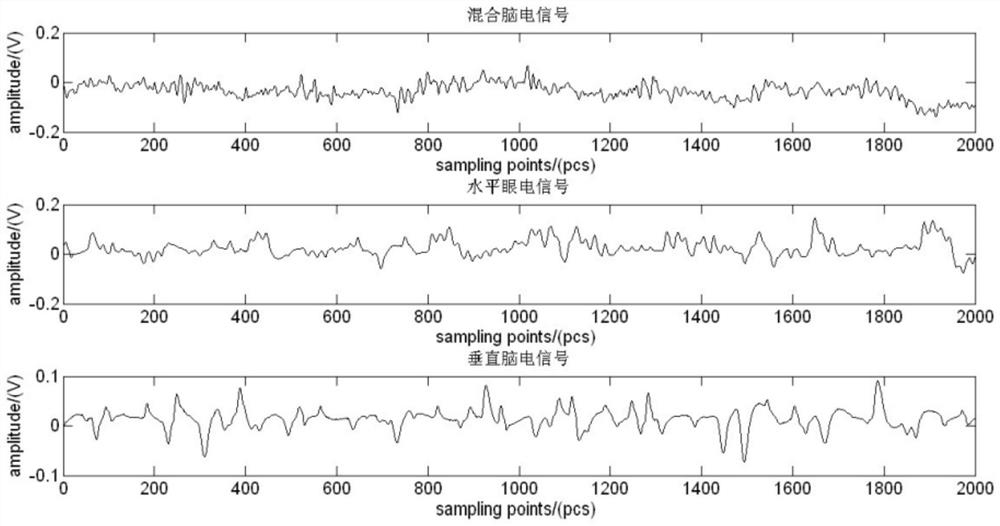Emotion cognition method based on electroencephalogram signal feature analysis
An EEG signal and feature analysis technology, applied in the field of EEG signal analysis, can solve the problems of inability to obtain high time domain resolution and frequency domain resolution at the same time, poor anti-aliasing ability, frequency domain difference, etc. Comprehensive analysis and frequency domain analysis, good statistical performance, and improved efficiency
- Summary
- Abstract
- Description
- Claims
- Application Information
AI Technical Summary
Problems solved by technology
Method used
Image
Examples
Embodiment Construction
[0045] The following will clearly and completely describe the technical solutions in the embodiments of the present invention with reference to the accompanying drawings in the embodiments of the present invention. Obviously, the described embodiments are only some, not all, embodiments of the present invention. Based on the embodiments of the present invention, all other embodiments obtained by persons of ordinary skill in the art without making creative efforts belong to the protection scope of the present invention.
[0046] Please refer to figure 1 with figure 2 , in the embodiment of the present invention, a kind of emotion cognition method based on EEG signal characteristic analysis comprises the following steps:
[0047] S1. Obtain corresponding types of subjects, and the specific steps of collecting EEG signals induced by subjects under different emotions for reference and analysis include:
[0048] Based on the EPQ personality test scale, select subjects of differe...
PUM
 Login to View More
Login to View More Abstract
Description
Claims
Application Information
 Login to View More
Login to View More - R&D
- Intellectual Property
- Life Sciences
- Materials
- Tech Scout
- Unparalleled Data Quality
- Higher Quality Content
- 60% Fewer Hallucinations
Browse by: Latest US Patents, China's latest patents, Technical Efficacy Thesaurus, Application Domain, Technology Topic, Popular Technical Reports.
© 2025 PatSnap. All rights reserved.Legal|Privacy policy|Modern Slavery Act Transparency Statement|Sitemap|About US| Contact US: help@patsnap.com



